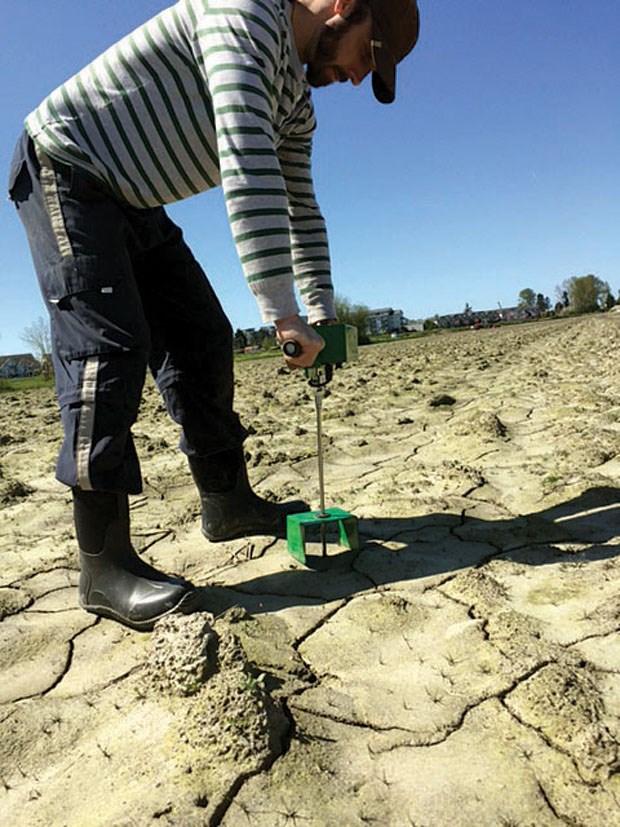As we drive through Delta's local roads and highways, we receive an impromptu education about the steps farmers take to grow the fresh produce we all enjoy.
The progression from field preparation to planting, crop growth to harvest- this cycle is easily visible from our car windows. The Corporation of Delta, in partnership with the Delta Agricultural Society, even installs large signs to help passersby identify the mosaic of crops grown within the community.
Although many aspects of farming can be viewed as we drive by local fields, there are other "hats" farmers wear which are less evident to the public eye. Did you know that farmers are the backbone to several major scientific studies which help conserve farmland and wildlife right here in Delta? For example, farmers who participate in the land Stewardship Programs offered by the local nonprofit, Delta Farmland and Wildlife Trust are currently assisting five separate research projects.
Soil Science Masters' Students from the University of British Columbia (UBC) are currently assessing fields enrolled in the Trust's Grassland Set-aside Program. Through this program, local farmers plant a mixture of grasses in their crop fields, and allow the grasses to fallow for up to four years. Masters students are testing the soil of these special grass fields throughout the summer to determine precisely how effective grasslands are in improving the fertility and structure of our farmland soils.
As well, students from the BC Institute of Technology (BCIT) are partnering with Delta farmers to evaluate farmland hedgerows, which are enrolled in the Trust's
Hedgerow Stewardship Program.
For the past 12 weeks, a BCIT intern has been monitoring trees on the margins of farm fields for songbird abundance and diversity. In addition, a UBC Masters student is monitoring these same habitats to determine their benefits to wild bees.
In the fall of 2016, two BCIT Fish, Wildlife and Recreation student teams will be evaluating the ability of Grassland Set-aside fields to conserve local raptors and small mammal populations. A separate BCIT team will be conducting surveys to provide farmers and conservation partners with information regarding the extent to which waterfowl feed on different crop residues.
The information gathered through all of these scientific evaluations may improve the ability of local farms to sustain their soil for long-term crop production, while maintaining the ability of the Fraser River delta landscape to conserve a multitude of wildlife species.
So, the next time you drive by a local farm field and see the crop sign, remember that because of the efforts of local farmers, Delta's fields are alive with scientific investigation!
-Submitted by the Delta Farmland and Wildlife Trust



